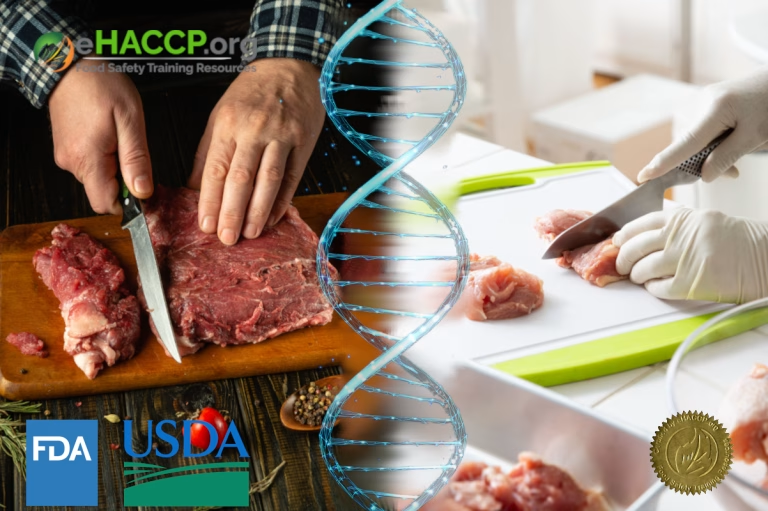The Meat and Poultry Hotline advises that consumers may utilize wood or a nonporous surface for cutting raw meat and poultry. Consider utilizing one cutting board for fresh produce and bread, and a distinct one for raw meat, poultry, and seafood. This will avert bacterial contamination on a cutting board utilized for raw meat, poultry, or shellfish, hence safeguarding food that necessitates no additional cooking.
In the event that they are properly maintained, cutting boards made of plastic and wood can both be considered safe; nonetheless, the safety of both cutting boards is dependant upon specific criteria linked with bacterial contamination and hygiene.
The following is an analysis that is based on previous research:
Boards for use in cutting wood:
Benefits include: As a result of the presence of chemicals such as tannins, wood, and more specifically hardwoods like maple, exhibits natural antibacterial properties. It has been established through research, including a study conducted by the University of Wisconsin in 1993, that hardwood boards have the potential to eliminate germs such as Salmonella and E. coli within a matter of hours. This results from the intrinsic properties of the boards as well as the ability of the wood to absorb moisture, which in turn sequesters bacteria from the surface.
Negative aspects include the fact that wood is porous and prone to the development of grooves or cracks over time. These grooves and cracks have the potential to harbor bacteria if they are not thoroughly cleaned. It is necessary to take additional precautions, such as oiling them on a regular basis, in order to prevent drying out and cracking. It is not a good idea to submerge wooden boards or put them in dishwashers because doing so could potentially undermine their integrity and increase the amount of bacteria that they retain.
Boards for Cutting Made of Polymer:
When kept in a smooth condition, non-porous polymers like polyethylene are less likely to absorb moisture or retain bacteria in deep cracks. This is one of the advantages of using these types of plastics. Because they are safe for use in the dishwasher, they make sanitization much easier. In general, plastic boards are easier to clean thoroughly than poorly worn hardwood boards, according to the findings of a study that was carried out in 1994 by the University of California, Davis.
Plastic boards have the potential to develop knife marks that can retain bacteria if they are not replaced or refinished within a reasonable amount of time. It is possible that inferior polymers could decay at a faster rate, which will increase the risk of contamination. Certain types of polymers have the ability to retain microplastics, which creates an issue for the long-term safety of food.
Bacterial Contamination:
The research results are ambiguous. Wood possesses antibacterial properties that provide benefits in specific studies; yet, plastic’s non-porous nature allows for comprehensive cleansing. A 2014 study published in Food Protection Trends indicated no significant difference in bacterial survival between well maintained hardwood and plastic cutting boards after thorough cleaning.
Comparative Analysis of Risk:
Regarding the contamination caused by bacteria, the conclusions of the research are equivocal. Wood possesses antibacterial properties that provide advantages in particular investigations; yet, the non-porous characteristics of plastic make it easier to do comprehensive sanitation. According to the findings of a study that was conducted in 2014 and published in the journal Food Protection Trends, there was no significant difference in the survival rate of bacteria between well-maintained wooden and plastic cutting boards after thorough cleaning.
In terms of maintenance, plastic is more convenient to keep because it can be cleaned in the dishwasher, but wood requires careful hand cleaning and drying in order to prevent the spread of bacteria. Boards of either sort that have been neglected may present potential safety risks.
Cross-Contamination: If one of these materials is used for raw meat and other foods without proper sanitation, it is possible for them to facilitate cross-contamination. It is recommended to use separate boards for raw meats and produce, as these two types of food are not interchangeable.
Suggestions Based on Pluralism
The Most Effective Choice:
When it comes to raw meat, plastic is generally considered to be a safer alternative due to its compatibility with dishwashers and its non-porous surface. This is predicated on the assumption that it does not include any deep incisions. Once it has been properly maintained and sanitized, wood is just as safe for everyday usage as other materials, such as vegetables, fruits, and bread.
In order to achieve optimal results, it is recommended that each board be thoroughly cleaned with hot soapy water as soon as possible after use. Utilize a solution consisting of one tablespoon of unscented bleach for every gallon of water in order to disinfect.
Instead of using plastic boards, switching to boards with shallow grooves is recommended because these boards are better suited for sanitation. The smoothness of wooden boards can be maintained by sanding or oiling them.
It is recommended that you make use of a variety of cutting boards, including plastic for fresh meat and poultry and wood for other applications.
Look for high-quality materials, such as high-density polyethylene (HDPE) for plastics and hardwoods like maple or walnut for timber.
A conclusion can be drawn that neither of the two choices is unquestionably “safer” when properly maintained. Despite the fact that wood is suitable for general applications due to its inherent antibacterial properties, plastic is superior for raw meat since it makes sanitization easier. The choices you choose will be determined by the maintenance procedures you follow and the culinary requirements you have. Prioritize routine cleaning, sanitization, and the replacement of worn boards in order to guarantee the highest possible level of safety.
Why did the plastic cutting board go to therapy? It had too many “deep cuts” from worrying about food safety!

